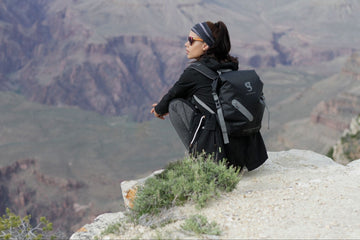Beginner's Guide to Trekking Your First Adventure

Are you excited about your first outdoor adventure? Trekking is a fantastic way to connect with nature, get some exercise, and explore new places. However, if you're new to it, trekking can seem a bit daunting. Don’t worry! This guide will walk you through everything you need to know to make your first trip a memorable and enjoyable experience.
Choosing the Right Trek
Your first step is to select a trek that matches your fitness level and experience. For beginners, it's best to start with a shorter, well-marked trail that doesn't have extreme elevation changes. Look for local trails in public parks or nature reserves. These often have clear paths, good signage, and facilities like restrooms and information centers.
Preparing Physically
Trekking involves walking for several hours, sometimes on uneven terrain. To prepare your body, start a routine that includes walking, jogging, or hiking on local trails. Aim to walk at least three times a week for a month before your trek. You can also incorporate strength-training exercises like squats and lunges to build leg strength and endurance.
Packing the Essentials
Packing for a trek can be tricky, but here’s a simple list to get you started:
Comfortable Footwear: Invest in a good pair of trekking shoes or boots. Make sure they are broken in before your trip to avoid blisters.
Clothing: Dress in layers. Start with a moisture-wicking base layer, add an insulating layer, and finish with a waterproof and windproof outer layer. Don’t forget a hat and gloves if trekking in cold weather.
Backpack: Choose a backpack with a capacity of 20-30 litres. It should have padded shoulder straps and a waist belt for comfort.
Water: Stay hydrated. Carry at least 2 liters of water. A hydration bladder can be very convenient.
Food: Pack lightweight, high-energy snacks like nuts, dried fruit, energy bars, and sandwiches.
Navigation: Carry a map and compass, and make sure you know how to use them. A GPS device or smartphone with offline maps can also be helpful.
First Aid Kit: Include bandages, antiseptic wipes, painkillers, and any personal medications.
Sun Protection: Bring sunscreen, sunglasses, and a hat.
Emergency Supplies: A whistle, flashlight, and multi-tool can be lifesavers in an emergency.
Checking the Weather
Check the weather conditions before you head out. Weather can change quickly, especially in mountainous areas. Be prepared for different conditions and know the signs of approaching weather changes. If there's a chance of rain, be prepared with waterproof gear.
Starting Slow
On the day of your trek, start slow and pace yourself. Trekking isn't a race. Enjoy the journey, take breaks when needed, and stay hydrated. Listen to your body and don’t push yourself too hard. If you feel tired or unwell, it’s okay to turn back or take a longer rest.
Leaving No Trace
One of the golden rules of trekking is to leave no trace. Respect nature by packing out all your trash, staying on marked trails, and not disturbing wildlife. If you see something beautiful, take a picture but leave it as you found it for others to enjoy.
Staying Safe
Safety should always be your top priority. Here are a few tips to keep you safe on the trail:
Hike with a Buddy: It’s safer and more fun to trek with a friend or in a group.
Inform Someone: Let someone know your trekking plan, including your route and expected return time.
Stay on the Trail: Stick to marked trails to avoid getting lost or damaging the environment.
Be Aware of Wildlife: Know what animals are in the area and how to react if you encounter them. Often, making noise will keep animals away.
Carry a Whistle: Use it to signal for help if you get lost or injured.
Enjoying the Experience
Trekking is about more than just reaching your destination. It’s about enjoying the journey, appreciating the beauty of nature, and spending time outdoors. Take time to observe your surroundings, listen to the sounds of nature, and breathe in the fresh air. It’s a chance to disconnect from the hustle and bustle of daily life and find peace and tranquility.
Learning and Improving
After your first trek, take some time to reflect on the experience. What did you enjoy? What was challenging? Use this information to plan future treks and improve your skills. As you gain experience, you can tackle longer and more challenging treks.
Joining a Community
Consider joining a local trekking club or online community. These groups can provide valuable tips, advice, and support. Plus, it’s a great way to meet like-minded people who share your passion for trekking.
Conclusion
Your first trekking experience is just the beginning of a wonderful journey. By choosing the right trek, preparing properly, and following safety guidelines, you'll set yourself up for a successful and enjoyable adventure. Remember to take it slow, enjoy the journey, and respect nature. Happy trekking!

